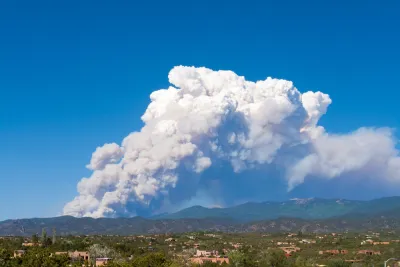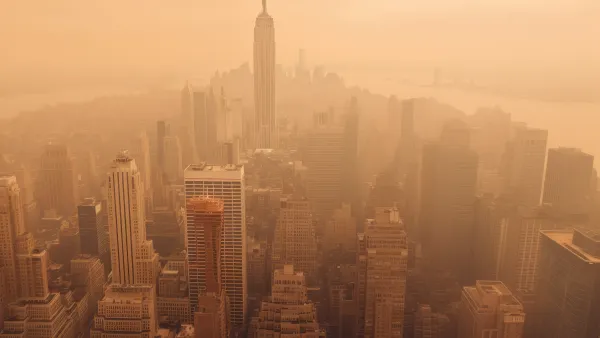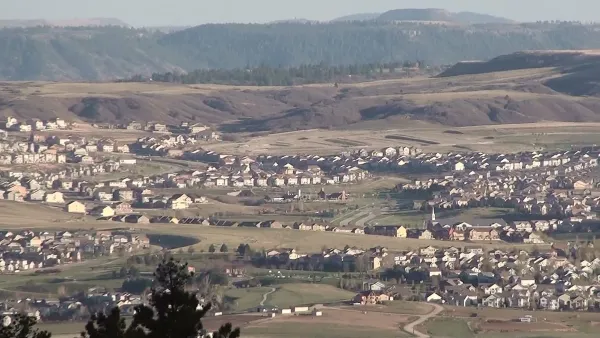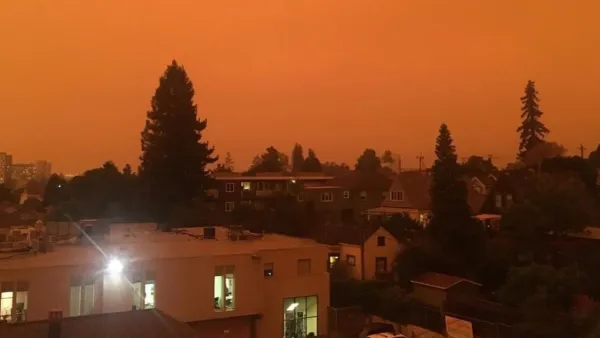Urban water suppliers have had to learn quickly that fire ecology is a major concern in maintaining a secure water supply system.

Jasques Leslie begins this story about the connections between watershed and fire protection with an anecdote from the 2011 Las Conchas Fire in New Mexico, which tripled the size of the previously largest wildfire in state history.
"But the fire’s full impact didn’t register until nearly two months later, when a thunderstorm in the Jemez Mountains washed tons of ash and debris into the Rio Grande River, the water source for half of New Mexico’s population and for a major agricultural area. Only an inch of rain fell, but the debris flows the storm generated turned the river black and dumped ash, sediment, and tree and shrub remnants into a major reservoir, requiring a costly cleanup."
According to Leslie, New Mexico is far from alone in learning this lesson: "megafires in similarly dry and overgrown watersheds have ended up contaminating downstream water supplies in numerous areas throughout the western United States, including Phoenix; Denver; Flagstaff, Arizona; and Fort Collins, Colorado. Downstream water managers serving millions of urban residents have learned that the security of their water supplies is tied to the health of upland watersheds that may be hundreds of miles away."
Now, the safety of the water supply is an outcome of for management—just as historic droughts and insect infestations have required completely new approaches to forest management.
Turning attention back to New Mexico after the Las Conchas Fire, residents in the Rio Grande watershed worked with the The Nature Conservancy to establish the Rio Grande Water Fund. That public-private partnership comprises 73 contributing members, including "government agencies at all levels, foundations and other NGOs, local water utilities, and local businesses and residents."
"Together they raised enough money for a 20-year program to restore 600,000 forest acres — enough to support the resilience of the entire central and northern New Mexico portion of the Rio Grande watershed. They have already restored 108,000 acres, and are racing to complete the job before another megafire occurs," according to Leslie.
FULL STORY: For a Warming World, A New Strategy for Protecting Watersheds

Analysis: Cybertruck Fatality Rate Far Exceeds That of Ford Pinto
The Tesla Cybertruck was recalled seven times last year.

National Parks Layoffs Will Cause Communities to Lose Billions
Thousands of essential park workers were laid off this week, just before the busy spring break season.

Retro-silient?: America’s First “Eco-burb,” The Woodlands Turns 50
A master-planned community north of Houston offers lessons on green infrastructure and resilient design, but falls short of its founder’s lofty affordability and walkability goals.

Test News Post 1
This is a summary

Analysis: Cybertruck Fatality Rate Far Exceeds That of Ford Pinto
The Tesla Cybertruck was recalled seven times last year.

Test News Headline 46
Test for the image on the front page.
Urban Design for Planners 1: Software Tools
This six-course series explores essential urban design concepts using open source software and equips planners with the tools they need to participate fully in the urban design process.
Planning for Universal Design
Learn the tools for implementing Universal Design in planning regulations.
EMC Planning Group, Inc.
Planetizen
Planetizen
Mpact (formerly Rail~Volution)
Great Falls Development Authority, Inc.
HUDs Office of Policy Development and Research
NYU Wagner Graduate School of Public Service




























